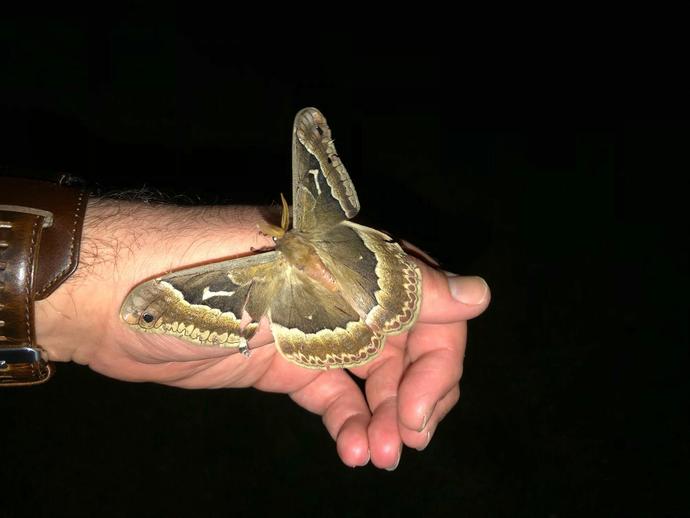March 14, 2021
We're reaching into the archives for today's #BenInNature update presented by our friends at Carter Bank & Trust! The following post was originally published on June 2, 2020.
I was excited to have this impressive visitor show up to my back porch on Saturday night! This is Callosamia angulifera, also known as the tulip tree silkmoth or the giant silkmoth. This species can be found throughout much of the east coast, as long as the area has American tulip trees (Liriodendron tulipfera). The caterpillars of these magnificent moths eat the leaves of tulip trees, while the adults don't eat anything at all.
In the northern part of their range, tulip tree silkmoths have one generation per year and can be spotted from June through August. Farther south, there are two generations; the adults can be spotted from March through April and then again in August.
These moths belong to the family Saturniidae, which contains some of the largest moths in the world. Some of my favorite moths are in this same family, including the green Luna moth (Actias luna) and the cecropia moth (Hyalophora cecropia), which is the largest moth in North America! Hopefully a few of those guys will come visit my back porch before too long.
Thank you to VMNH Associate Curator of Invertebrate Zoology Dr. Kal Ivanov for confirming this ID!
ABOUT #BenInNature
Social distancing can be difficult, but it presents a great opportunity to become reacquainted with nature. In this series of posts, Administrator of Science Ben Williams ventures outdoors to record a snapshot of the unique sights that can be found in the natural world. New updates are posted Monday - Friday, with previous posts highlighted on the weekends. This series of posts is made possible thanks to the support of VMNH Corporate Partner Carter Bank & Trust (www.cbtcares.com).
NATURE PHOTO IDENTIFICATIONS
If you discover something in nature that you would like help identifying, be sure to message us right here on Facebook with a picture (please include location and date of picture) and we'll have our experts help you identify it!

 Hours & Admissions
Hours & Admissions Directions
Directions

